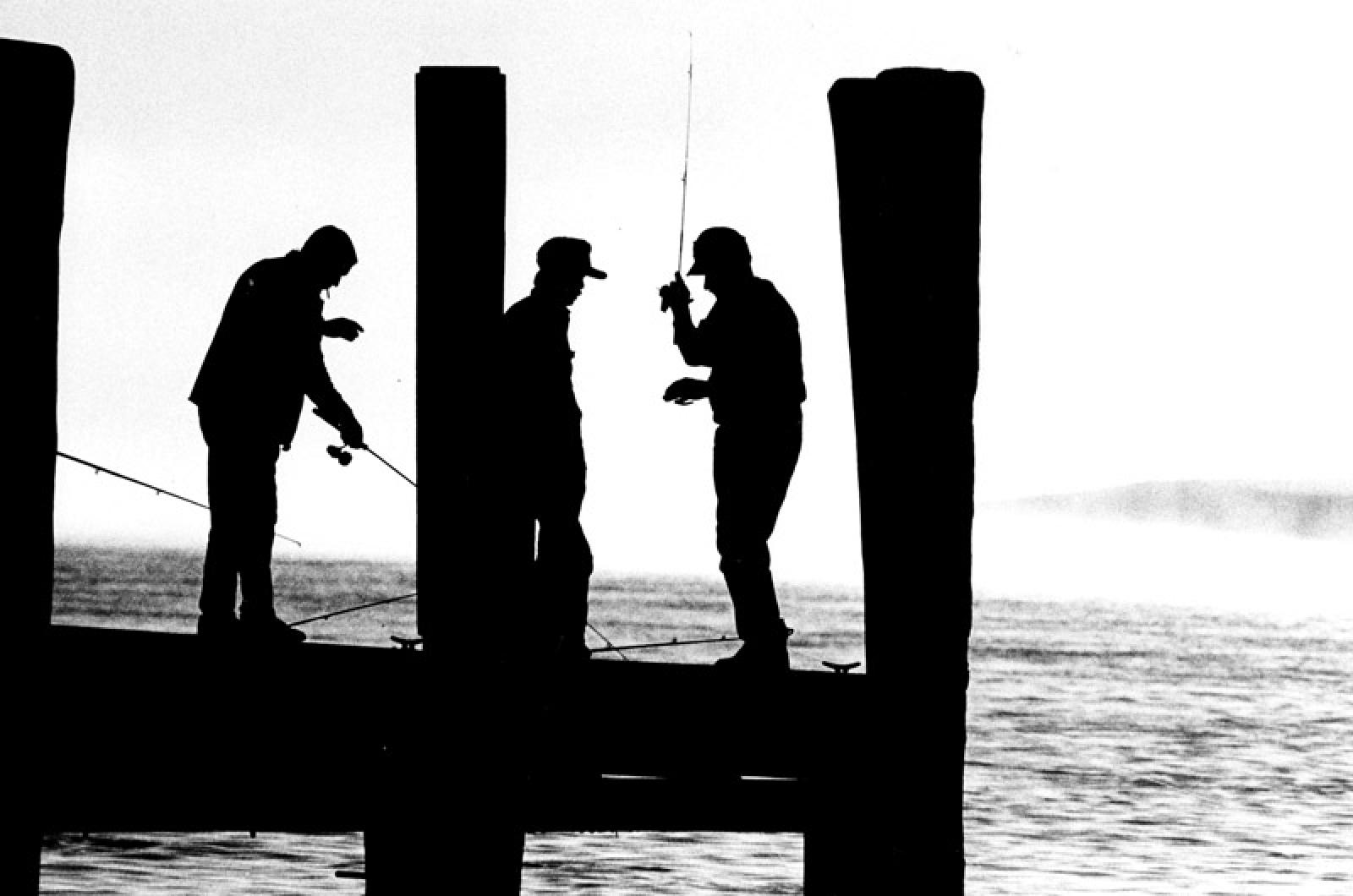At the height of boating activity last summer in Edgartown harbor, there was a pleasant surprise. Two dolphins spent three days swimming around. They were observed meandering amid the piers, the boats and the moorings. The dolphins weren’t lost or here on vacation and they weren’t here to draw a community of spectators, though lots of folks saw them. They weren’t participants in some impromptu aquarium show. They were here because there was food, and plenty of it.
For the first time in at least two decades, Edgartown harbor was filled with forage fish. Small bait fish were swirling in the middle of the harbor beneath the forest of aluminum masts and beautiful sailboats. You could watch the activity from the dock, a deck or from a dinghy.
The fish these dolphins were feeding on were what we locally call bunker, or more widely known as menhaden. For town fishermen, the arrival of menhaden was a pleasant unexpected gift. Menhaden are a choice bait fish to catch striped bass and bluefish. During the derby this past fall, competitors were out in Edgartown harbor in small skiffs with throw nets or rods and treble hooks trying to snag them. In years past, if you wanted bunker, you had to buy it in a tackle shop. Bunker is like candy to striped bass.
Menhaden doesn’t appear in fish markets or the restaurants, which is why nobody really talks about menhaden. But every fish in the ocean loves to eat menhaden, from snapper bluefish close to shore to the whales that swim in the open ocean. Swordfish eat menhaden. Seals and dolphins eat menhaden. The only other top favorite meal of choice is squid, but that’s another subject.
Menhaden is essential to the life cycle of the ocean which is why the Atlantic States Marine Fisheries Commission is holding a series of public hearings from Maine to Florida on the future management of menhaden. On Monday, the commission held a meeting in Bourne, and the next hearing in Massachusetts will be in Braintree on Dec. 20 at the Thayer Public Library, located at 798 Washington street.
ASMFC is also seeking written comment for those unable to make it to the meetings.
The commission wants to hear from stakeholders, of which Martha’s Vineyard is definitely one. Fisheries managers are taking a new look in response to the growing concern that menhaden needs to be better managed. But this is not about quotas that will be delivered to fish markets or restaurants. The harvest is used for fish meal and shipped overseas to fish farms. This is a resource that is predominantly used as fertilizer. This is a fish caught by the ton and rendered into oil and inedible products. The steel fishing boats that work with nets as big as a football fields are as big or almost as big as our local Steamship Authority ferries. Menhaden don’t stand a chance.
But for those of us with some years under our caps, we remember a few decades ago when menhaden ruled the waters and were part of the harbor story. In those years there was drama at and below the surface, as these bait fish were chased about by bigger fish; false albacore and the once abundant squeteague, known also as sea trout.
Back then Menhaden were abundant, swarming like underwater bees in all the Vineyard harbors and in and around the coastal ponds. But mysteriously they disappeared. We still believe that not far offshore they were vacuumed up by large fishing boats from afar.
Like oysters, menhaden feed on phytoplankton and zooplankton. They don’t bite and aren’t attracted to a baited hook. Instead they swim with their mouths open and ingest microscopic creatures. They are filter feeders and play a huge part in cleaning up our waterways.
While there has been plenty of welcome attention in recent years about how oysters are key to restoring our saltwater ponds, menhaden do an even sweeter job. A century ago, menhaden and oysters ruled the harbors and coastal inlets from Maine to the Florida. They were essential like anadromous fish, river herring, shad and even salmon.
Menhaden’s gift to the world is more precious to the health of our ocean than rendered as a product to feed an economic engine. Menhaden are the lifeblood of an ecosystem that is suffering in backyard waterways, nearby estuaries and most coastal ponds. But because they aren’t sport fish, they don’t usually make big headlines. But without them everyone suffers.
Visit the Atlantic States Marine Fisheries Commission at asmfc.org for a full list of hearings. Public written comment will be accepted until 5 p.m. on Jan. 4, 2017 and should be forwarded to Megan Ware, Fishery Management Plan Coordinator, 1050 N. Highland St., Suite A-N, Arlington, VA 22201; 703.842.0741 (FAX) or at comments@asmfc.org (Subject line: Menhaden PID).




Comments (23)
Comments
Comment policy »